A small but beautiful city along the Rhine River, Koblenz has a pretty Old Town, a well-preserved fortress, and thousands of years of history. Here’s what you need to see and do in this city where the Rhine and Moselle Rivers meet!
This post contains affiliate links, from which we may receive a commission. You can read our full affiliate disclosure here.
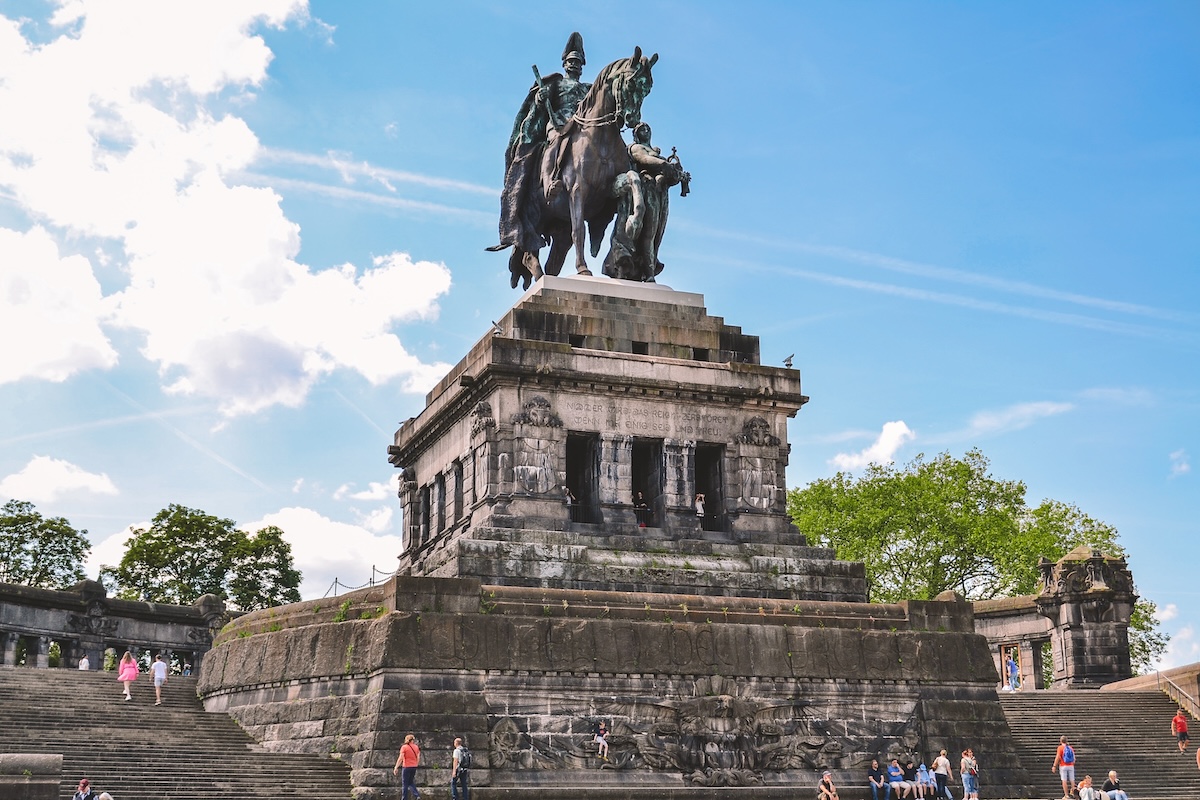
Koblenz is a small but important city in the famous Rheingau region of Germany. This area is largely known for its Riesling and Spätburgungder wines, but there’s so much more to the Rheingau than that!
Koblenz is known for being the spot where the Rhine River merges with the Moselle River. You can see the exact spot where the rivers meet at the impressive Deutsches Eck (German Corner), then saunter down the Rhine Promenade to either take the cable car up to Europe’s second-largest preserved fortress or see more of the charming Old Town.
Strolling around Koblenz today, you’d have no idea that roughly 10,000 tons of bombs were dropped on the city during World War II.
It’s a city steeped in history, and it’s definitely worth visiting! Here are the top things to do in Koblenz, in the order that I think makes the most sense.
Table of Contents
Click “show” to see the full table of contents for this post. You can jump around the post as desired by clicking on the individual sections listed below.
Getting to Koblenz
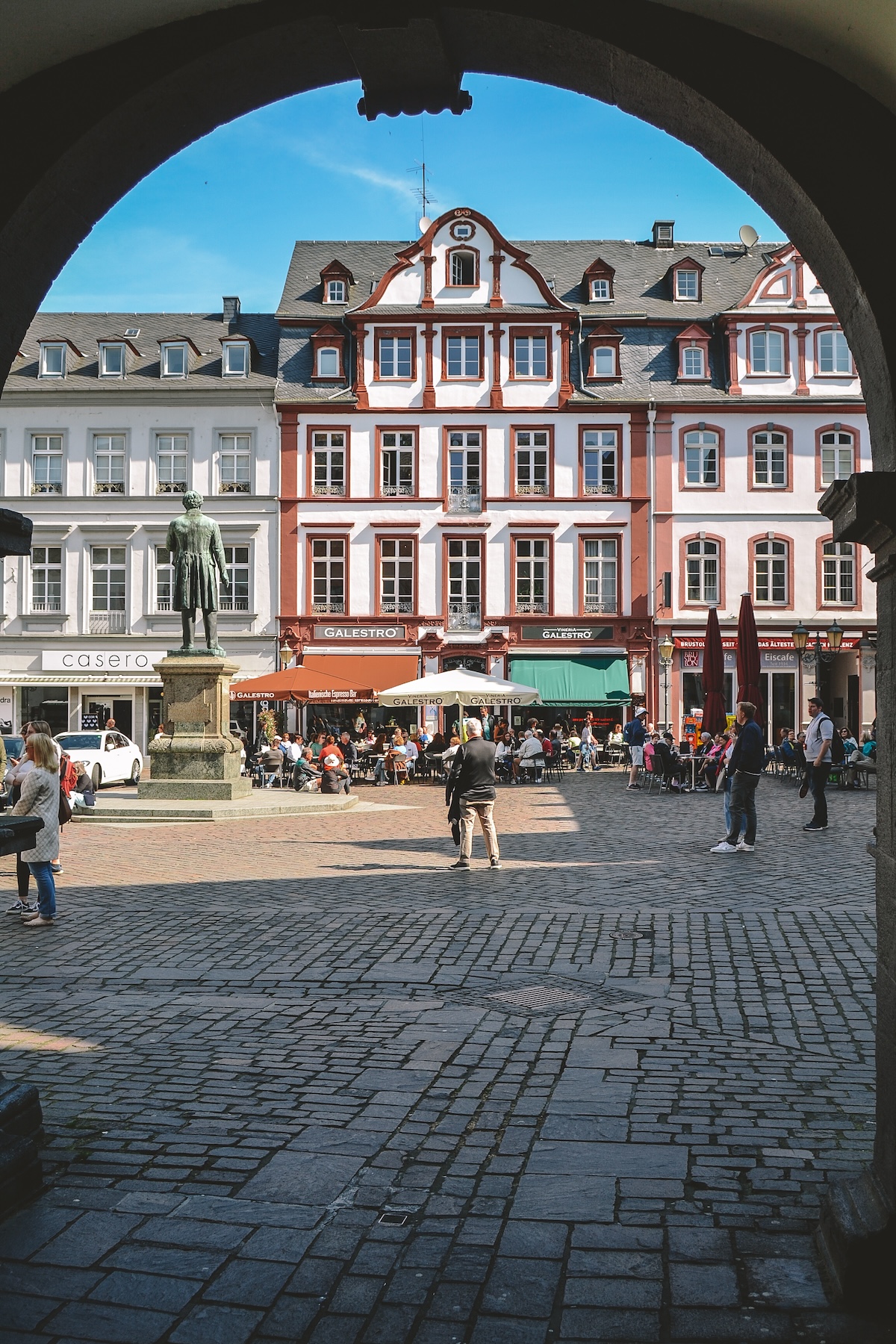
I suggest traveling to Koblenz via the regional train network. The city has parking garages so you could definitely drive here, but the city center is easily walkable and the Old Town is a pedestrian zone so a car won’t do you any good there.
You can book train tickets directly through the Deutsche Bahn website or a third-party provider like Omio, and tickets are fairly inexpensive. Note that if you have a Deutschland ticket (only available to anyone living in Germany, not for tourists) riding the regional train to Koblenz is included in the monthly fee!
When taking the train to Koblenz, I prefer disembarking at the “Koblenz Stadtmitte” station rather than the Hauptbahnhof (central station). The Stadtmitte station is a smidge closer to the Old Town — but of course, if you disembark at the central station by accident it’s no big deal!
Lastly, if you plan on exploring the Rhine in style on a river cruise (either a multi-day tour or a day cruise), you might want to check the route because it’s highly likely that the ship stops at Koblenz. It’s one of the most popular stops for Rhine River cruises, and for good reason!
How Much Time Is Needed in Koblenz?
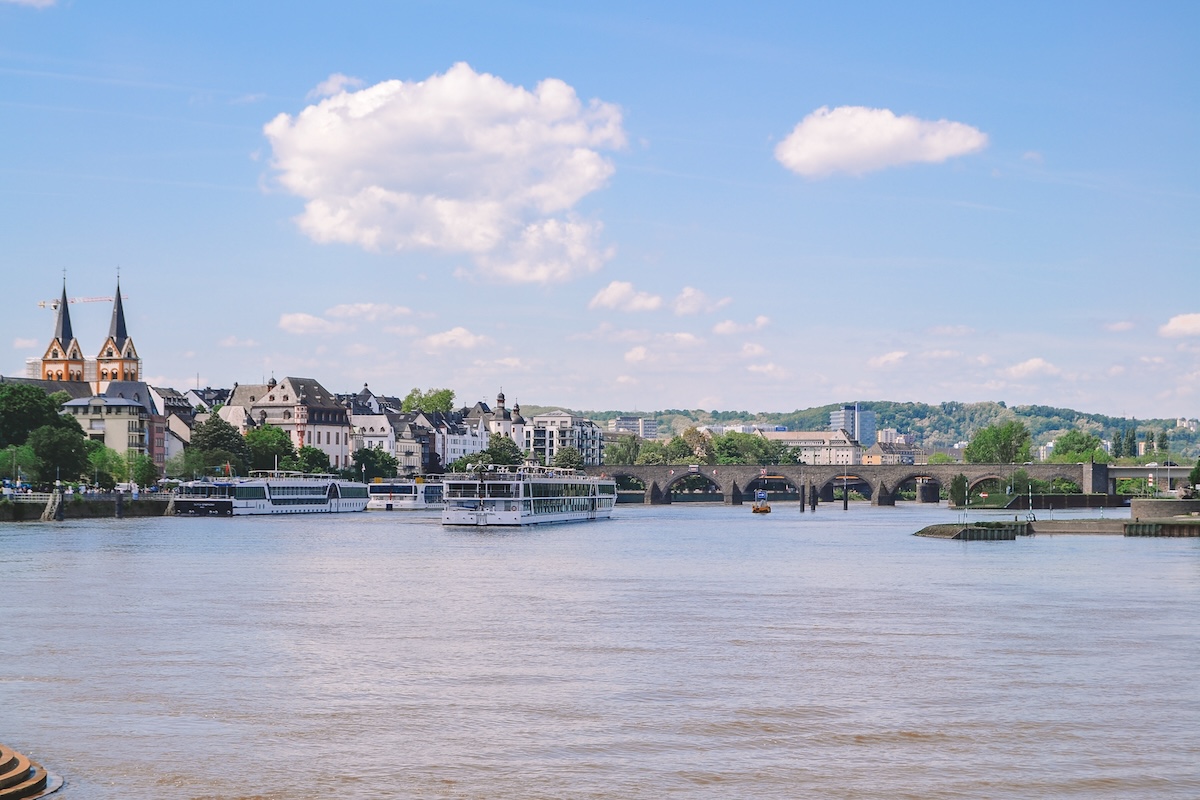
There’s enough to do in Koblenz and the immediate area that you could easily fill two days in the city. However, I think one full day is enough to see the main attractions in Koblenz.
It’s a fairly small city, and the main things to do are all located within a small radius of the Old Town. For reference, I arrived in Koblenz around 10:30am and departed on the 6pm train.
If you prefer exploring cities at a more leisurely pace than me, the absolute must-do activities in Koblenz in one day are: seeing the Deutsches Eck, riding the cable car to Ehrenbreitstein Fortress, touring the fortress, and then wandering around the Old Town. You’ll see many of the other top attractions along the way without issue!
See the German Corner (Deutsches Eck)
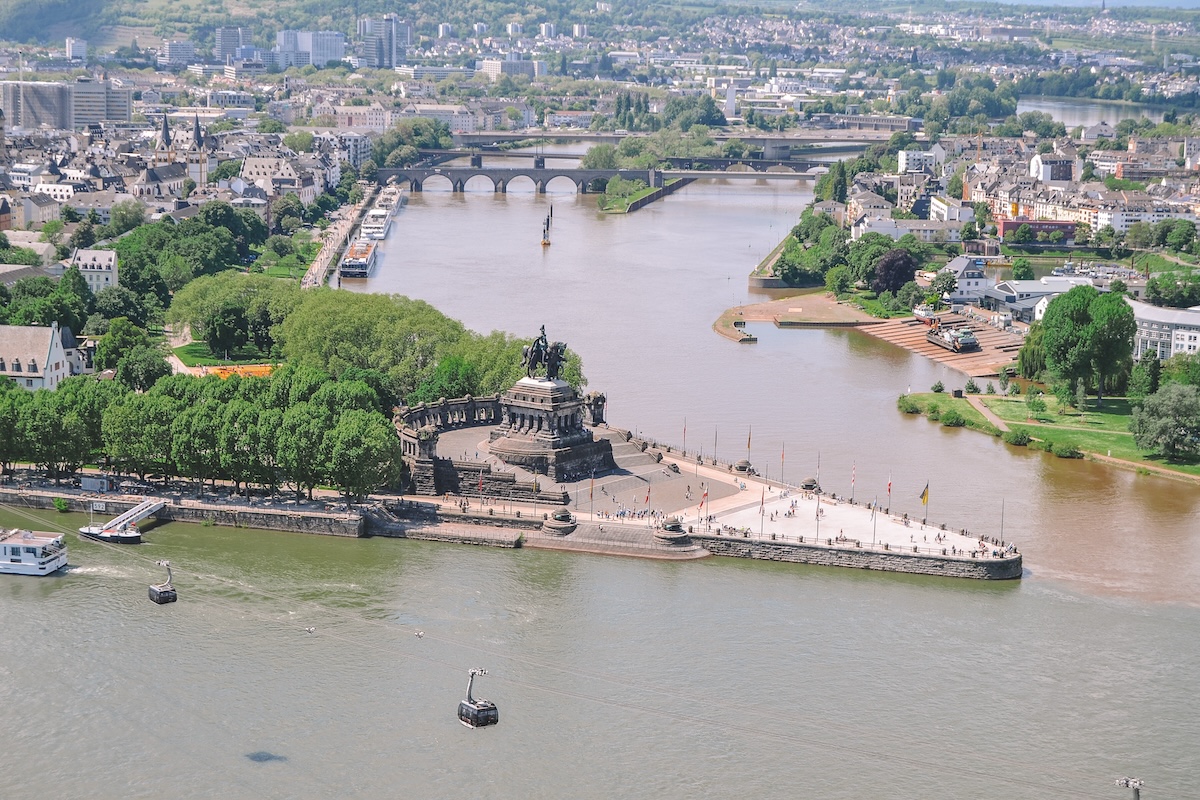
The reason why visitors from all around the world visit Koblenz is to see the Deutsches Eck (German Corner). This is where the Moselle River meets the Rhine River, and it’s a pretty spectacular sight!
The 37-meter tall sculpture on top of the monument is of Kaiser Wilhelm I — the emperor responsible for unifying Germany in 1871 — and was erected by his grandson, Kaiser Wilhelm II, in 1897.
Like much of the city, the original bronze statue was destroyed in WWII. For many years, a lone German flag stood where the massive statue is, but in 1993 the Deutsches Eck was restored to its former glory and the sculpture was replaced.
I suggest climbing up into the base of the monument to see the point where the two rivers meet more clearly. (The rivers are slightly different colors, and on a sunny day you can actually see the gradient of colors formed where the waters first meet.)
Tip: The Deutsches Eck is located along the 3.5-kilometer Rhine Promenade. The Promenade is very picturesque and a great place to stretch your legs while enjoying views of the Rhine River. The Deutsches Eck is also less than a 5-minute walk to the cable car that takes you up to Ehrenbreitstein Fortress (more on the cable car later in this post!).
Tour Ehrenbreitstein Fortress (Festung Ehrenbreitstein)

The other gem in Koblenz is Ehrenbreitstein Fortress, which is the second-largest preserved fortress in all of Europe.
The fort sits 188 meters above the Rhine River, and its ramparts offer a spectacular view of the Deutsches Eck, Moselle and Rhine Rivers, Koblenz, and the surrounding area. (I guess that’s why the fortress was built so high up!)
Some kind of fort has sat on this site since 1,000 AD, but the current fortress was completed in 1828. Within the fortress, there are numerous exhibits that walk you through its history as well as the history of the area.
Cable Car to Ehrenbreitstein Fortress

The fastest, easiest, and — let’s face it — most fun way to reach Ehrenbreitstein Fortress is to ride the cable car up and over the Rhine River.
The cable car ride lasts about 10 minutes, and the panoramic cars offer 360º views of the Rhine River, Deutsches Eck, fortress, and more!
I recommend buying your cable car tickets in advance online to avoid waiting in line day-of. (I actually bought my tickets at the Visitors Center, and there was no line there.)
Tip: If you plan on entering the fortress, I suggest purchasing a Combination Ticket that includes both a round-trip ride on the cable car and entrance to Ehrenbreitstein. A combination ticket costs €19, which saves you nearly €4 compared to if you bought both tickets separately.
See the Basilica of St. Castor (Basilika Sankt Kastor)
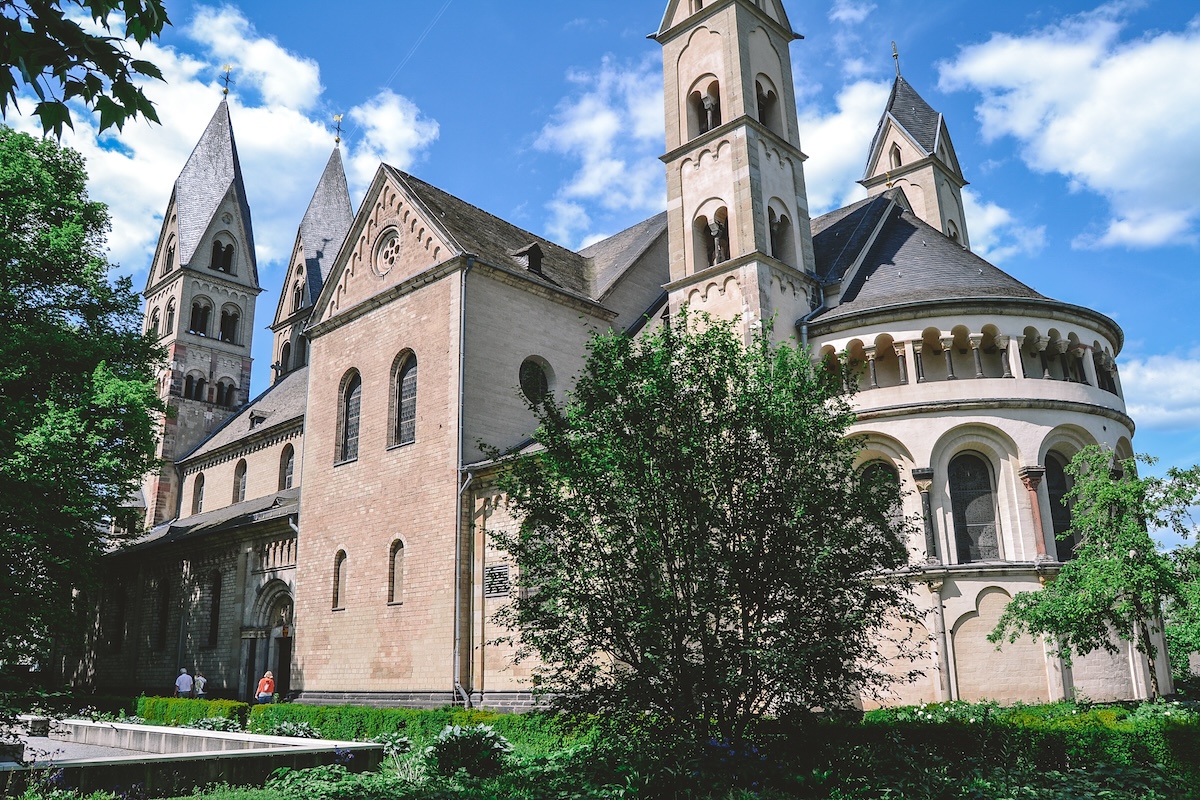
Steps away from the cable car entrance is Koblenz’ oldest preserved church, the Basilica of St. Castor. The current church dates back to the 12th century, but the original building was consecrated in 836 AD.
The basilica often served as a meeting place for kings and emperors during the reign of the Holy Roman Empire. Ruling lords would enter the church to settle disputes and facilitate negotiations.
If the weather is nice, take a few moments to explore the lush gardens surrounding St. Castor’s. There are some lovely headstones set into the garden wall near the back of the church, which I particularly admired.
Tip: I recommend visiting the basilica en route to the Old Town after visiting the Deutsches Eck and Ehrenbreitstein Fortress.
Explore the Old Town
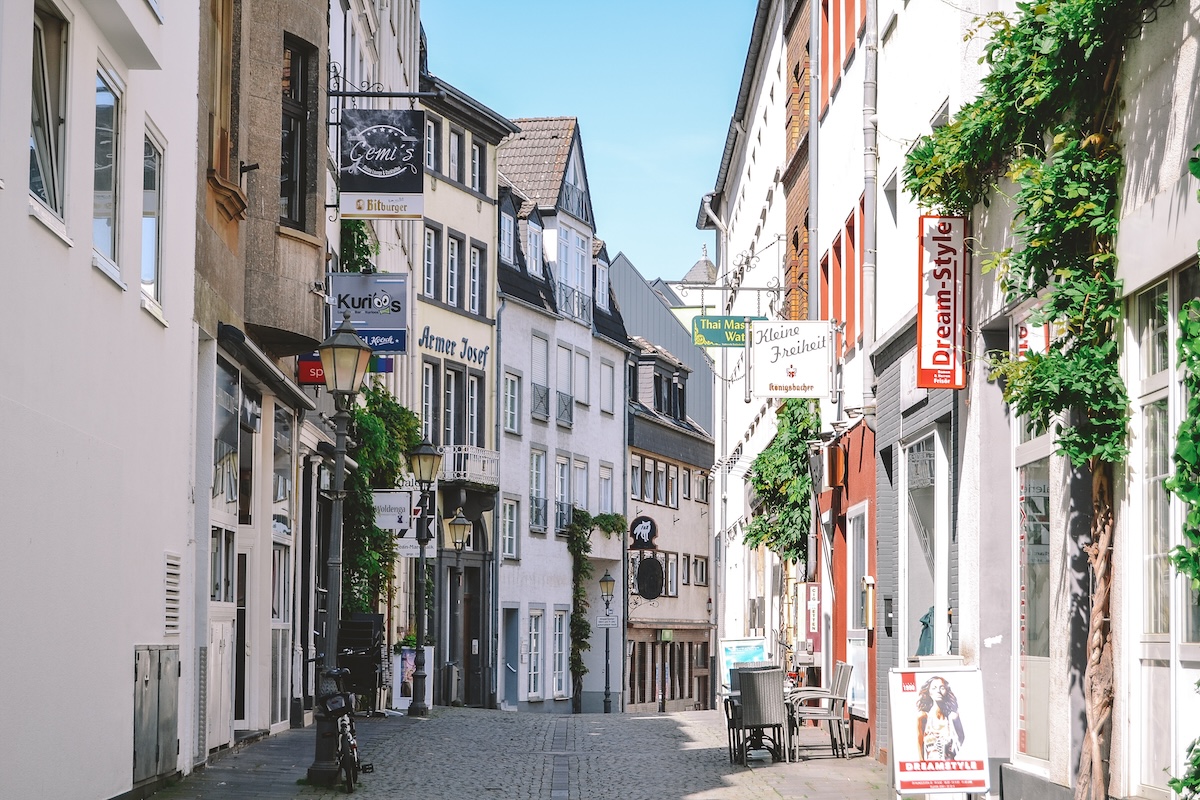
Old Town Koblenz was almost completely destroyed in WWII and was rebuilt in a unique fashion. It was made to look neither fully medieval / historical, nor full modern.
It’s a cozy cross between the two that makes the entire city center feel incredibly welcoming.
Within the Old Town, you’ll find plenty of local boutiques and restaurants, additional churches, and many whimsical bronze sculptures (I never actually learned why there are so many fun sculptures here!).
You can easily see the Old Town and the main places of interest in about 2 hours, so take it easy!
Old Town: Visit all the Squares
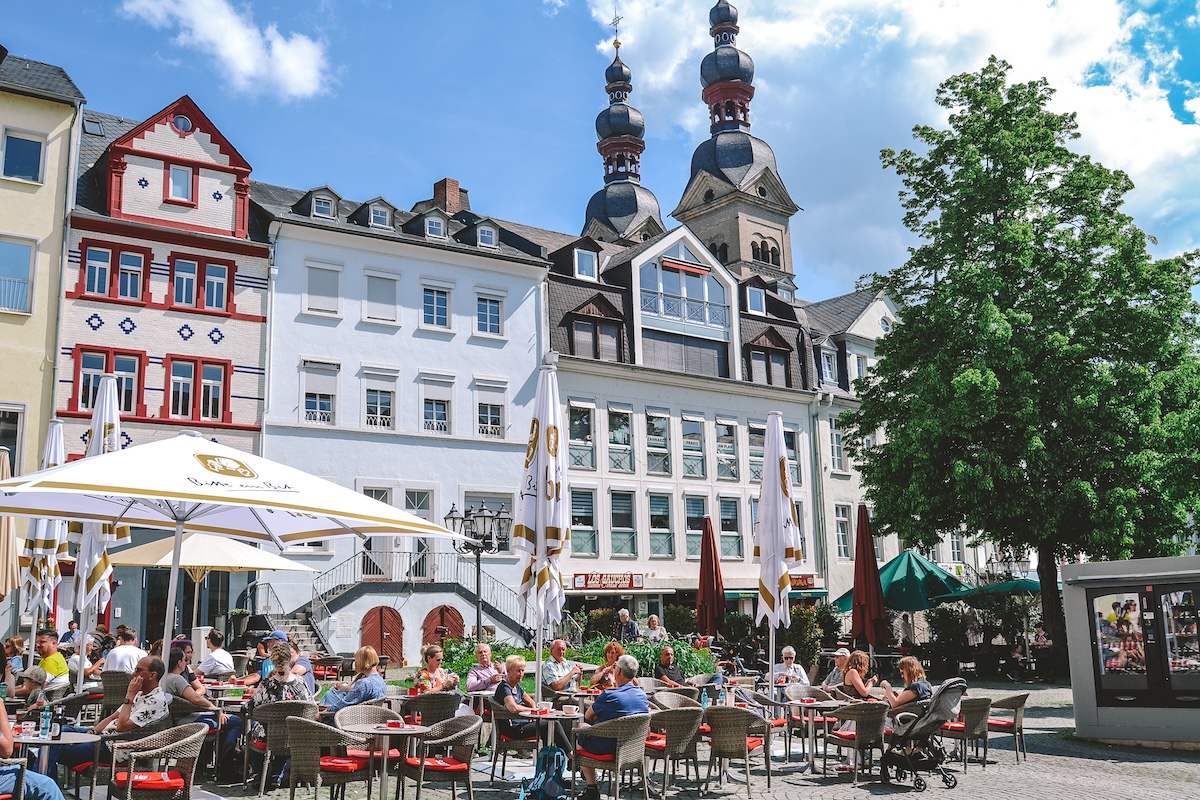
There are six squares in the Old Town: Am Plan, Jesuitenplatz, Münzplatz, Florinsmarkt, Zentralplatz, and Görresplatz.
However, you don’t need to see every last square! My personal favorites were Am Plan, Jesuitenplatz, and Florinsmarkt.
Am Plan — Was formerly a market and tour tournament square. The fountain in the middle of the square provided locals with water until 1806. This is arguably the prettiest square thanks to the cluster of original Baroque buildings on one end.
Jesuitenplatz — “Jesuit Square” was named after the order of Jesuits who lived here from 1580 to 1773. The Town Hall is located just off of the Jesuienplatz.
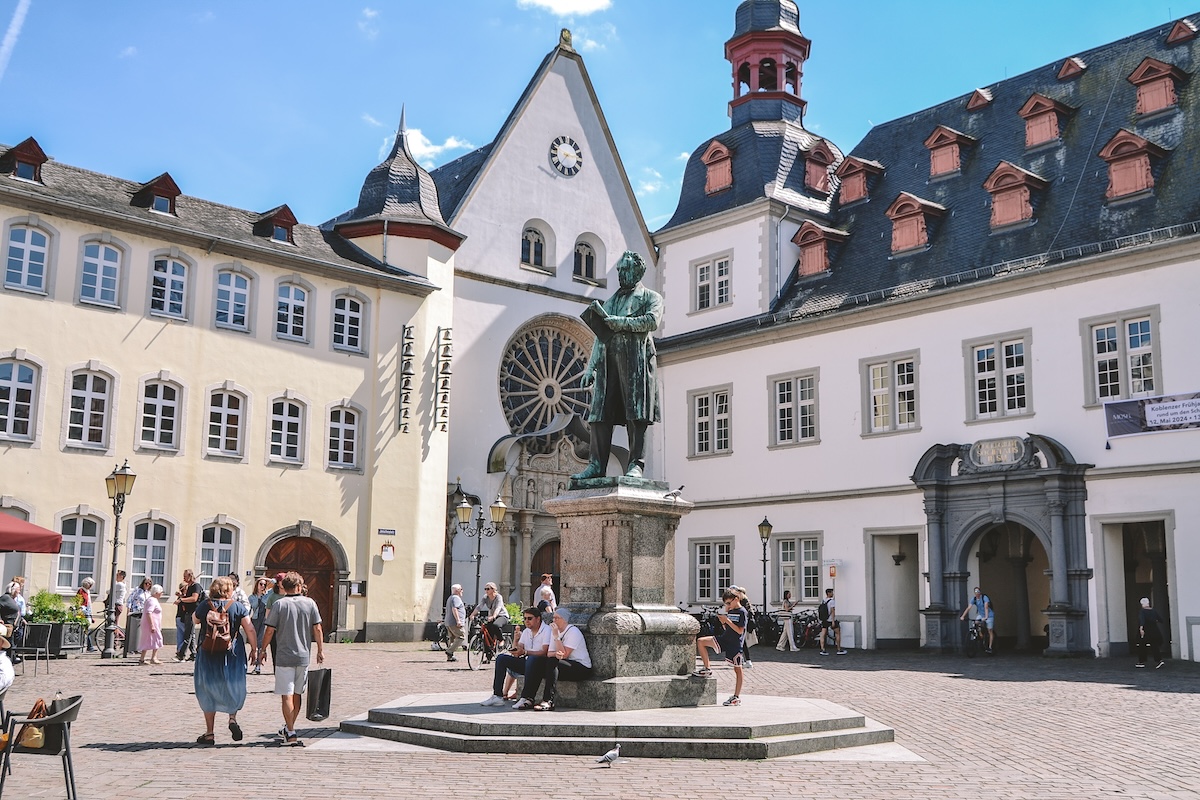
Jesuitenplatz — “Jesuit Square” was named after the order of Jesuits who lived here from 1580 to 1773. The Town Hall is located just off of the Jesuitenplatz.
Make sure to see the Schängel Fountain (Schängelbrunnen), which is just around the corner from the Jesuienplatz! The fountain is of a young boy — a “little rascal” — and serves as the symbol of the city. The little rascal spits water out at passersby every few minutes, so watch out!
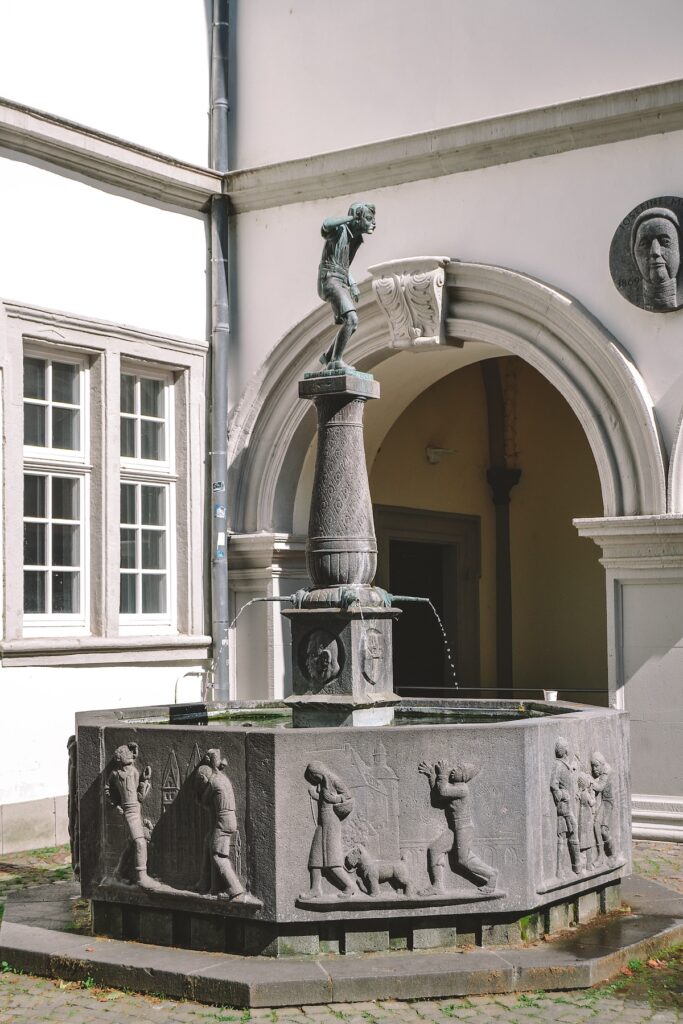
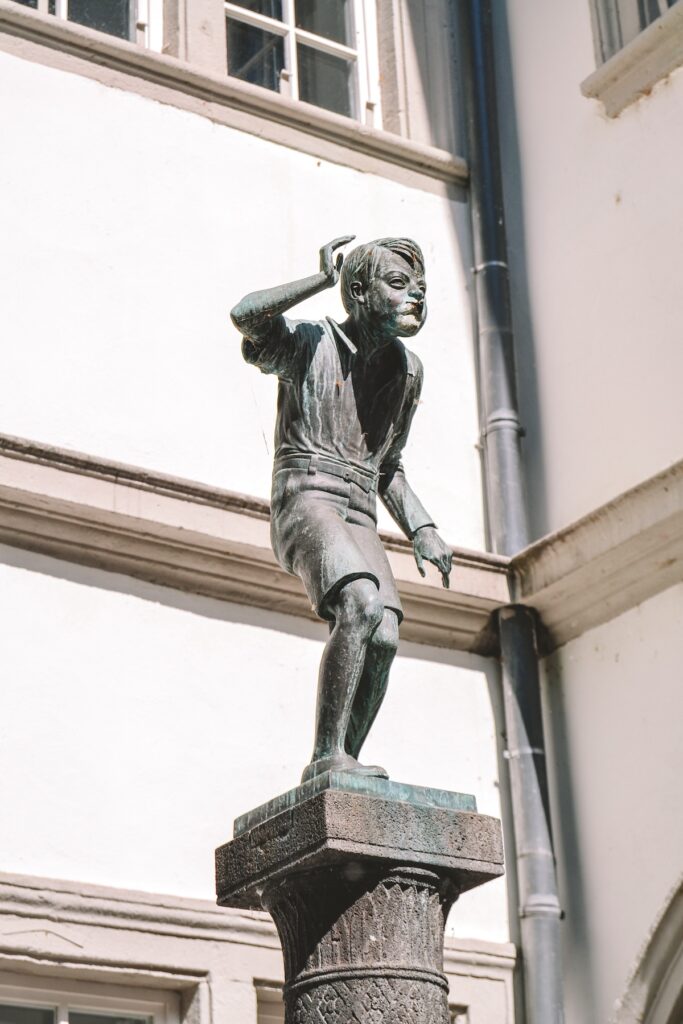
Münzplatz — So-called because the electors of Trier had their coins minted here (“Münzen” means “coins” in German).
Zentralplatz — Not a “must” in terms of sightseeing, but it’s useful to know because this is where the tourist information office is located.
Görresplatz — Worth visiting to see the 10-meter high History Column, which tells the history of Koblenz.
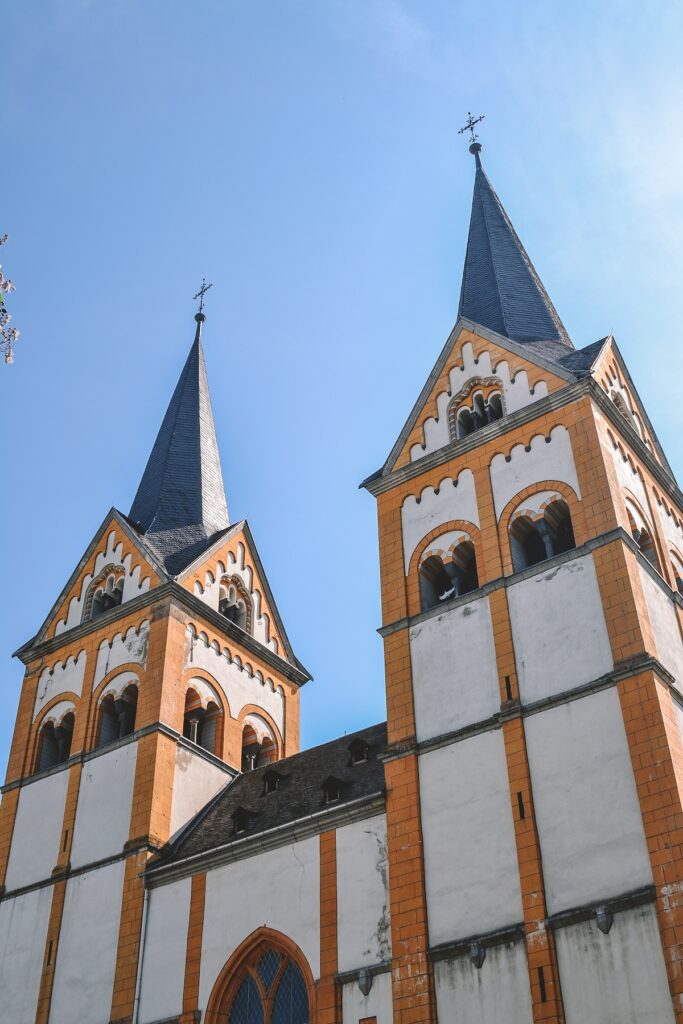
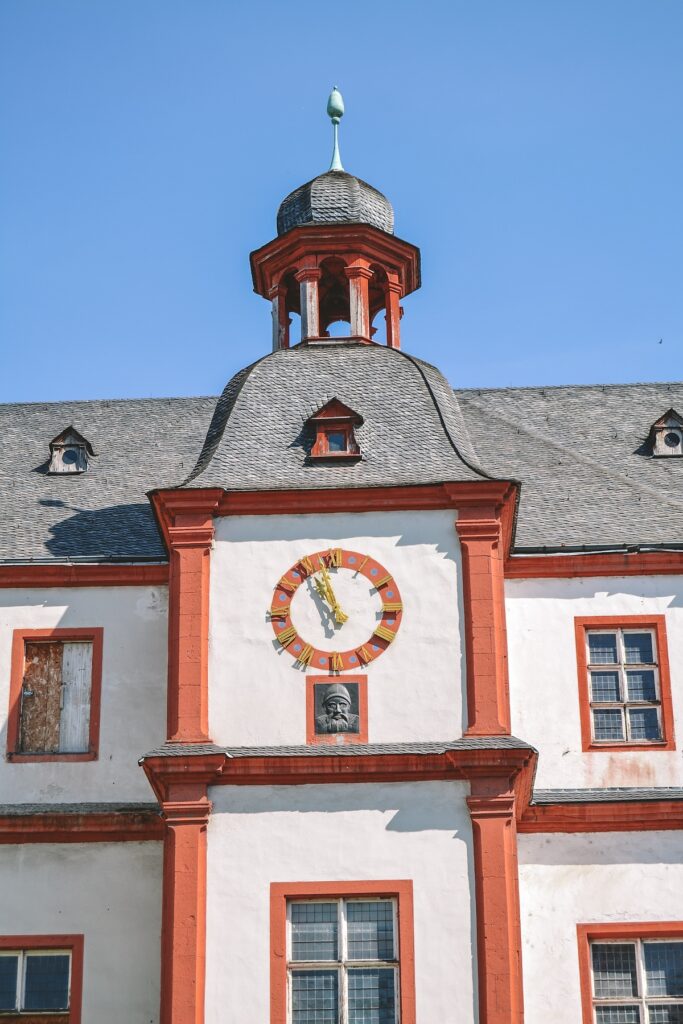
Florinsmarkt — A pretty little square that’s presumably named after the Florinskirche (Florin’s Church), which was built around 1,100 AD. Definitely check out the church, because there’s a cannonball lodged in the vault above the baptismal font! (It was put there on purpose to commemorate the destruction of Koblenz in 1688 by the French, don’t worry.)
Next to the church is the Baroque-style Kauf- und Danzhaus. The building has fallen largely into disrepair, but take a close look at the clock on the tower of the building — it’s the “Eye Roller!” The man’s eyes roll back and forth as the pendulum swings inside the clock, and every hour and half hour he sticks his tongue out at you!
Old Town: “Four Towers” (“Vier Türme”)
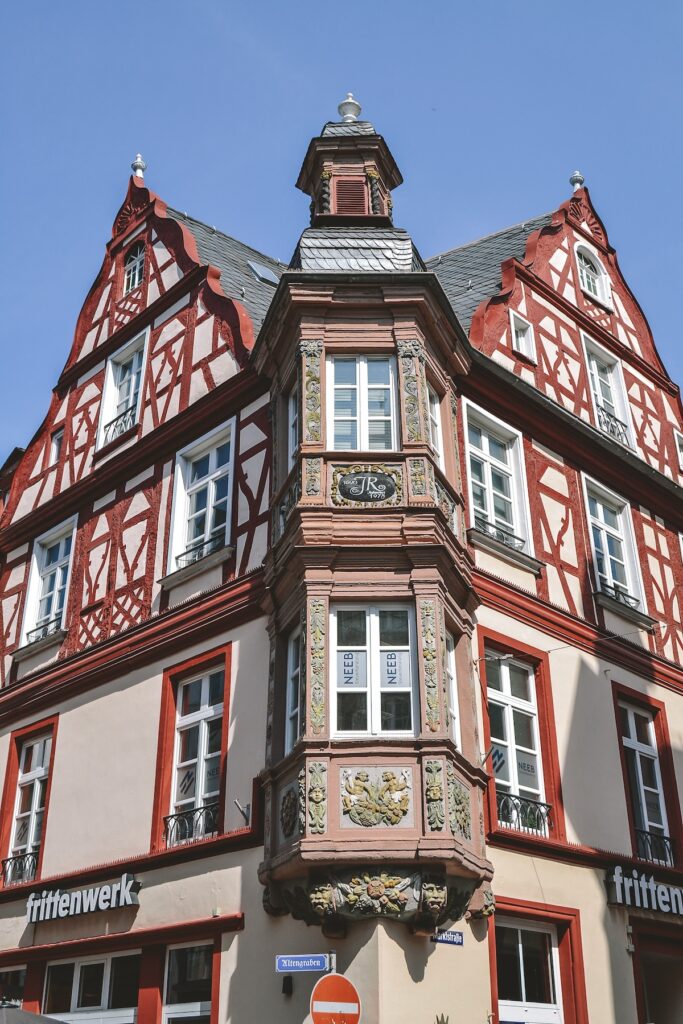
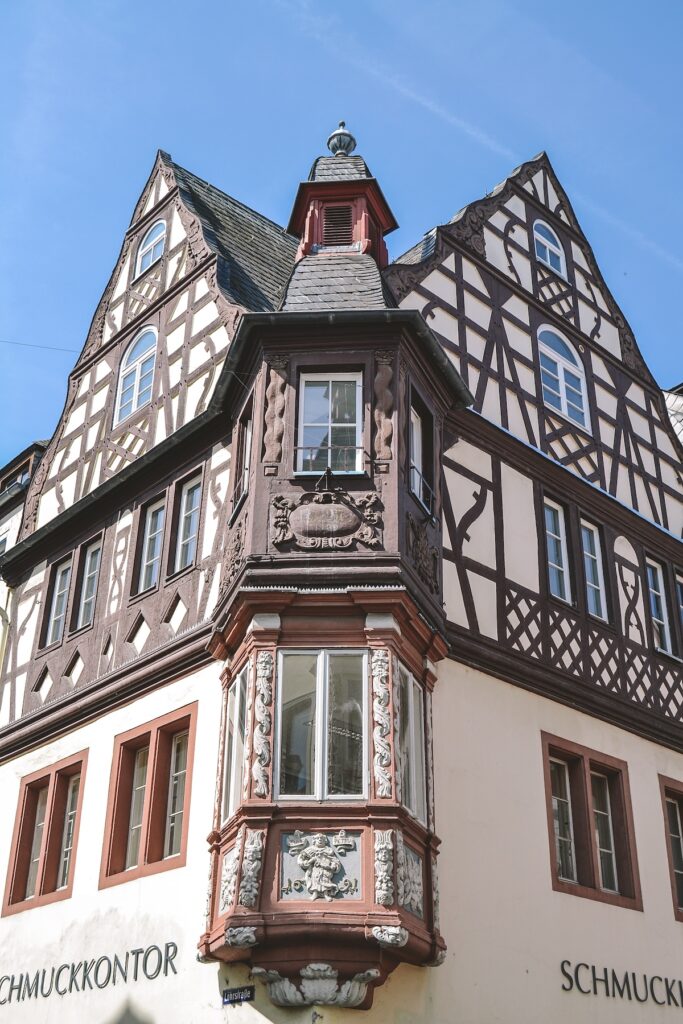
The “Vier Türme” are four beautiful oriel towers (a type of bay window) that were built in 1608. They were destroyed some years later in a war, then rebuilt in 1690, so still quite historic!
The oriel towers are on four separate buildings located at the intersection of Am Plan, Löhrstraße, Altengraben, and Marktstraße.
Old Town: Church of Our Lady (Liebfrauenkirche)
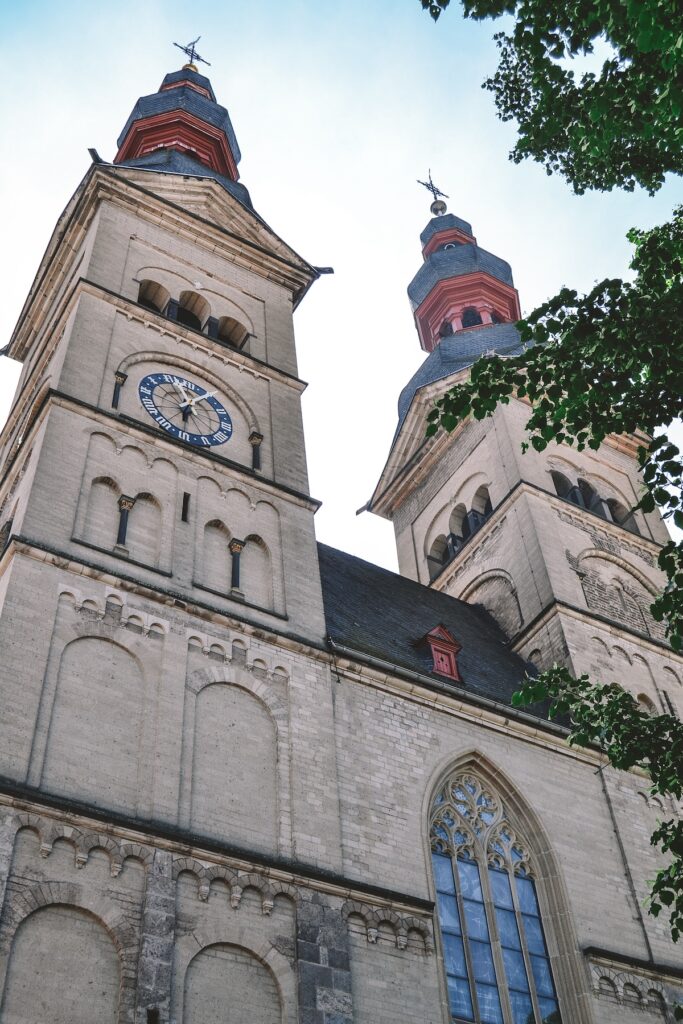
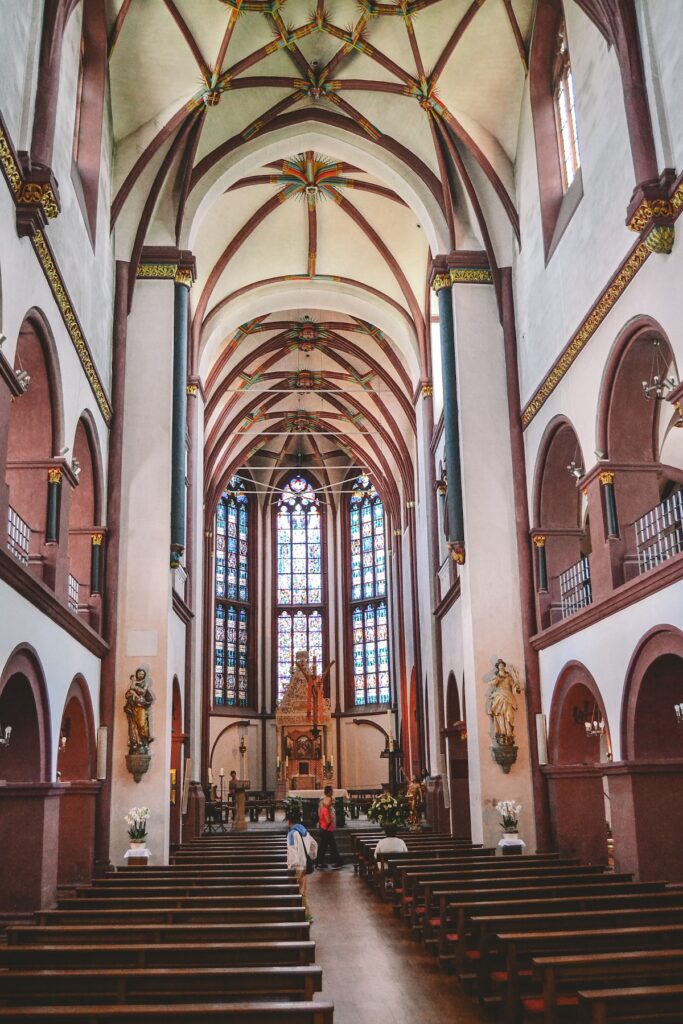
While you’re in the Old Town, you can’t miss the opportunity to see the Church of Our Lady.
It was Koblenz’ main church between the Middle Ages and the French Revolution, and its twin onion domes can be seen peeking above the skyline throughout the Old Town.
The interior of the church is brightly painted, and it was a joy to photograph.
Relax by the Electoral Palace (Kurfürstliches Schloss)
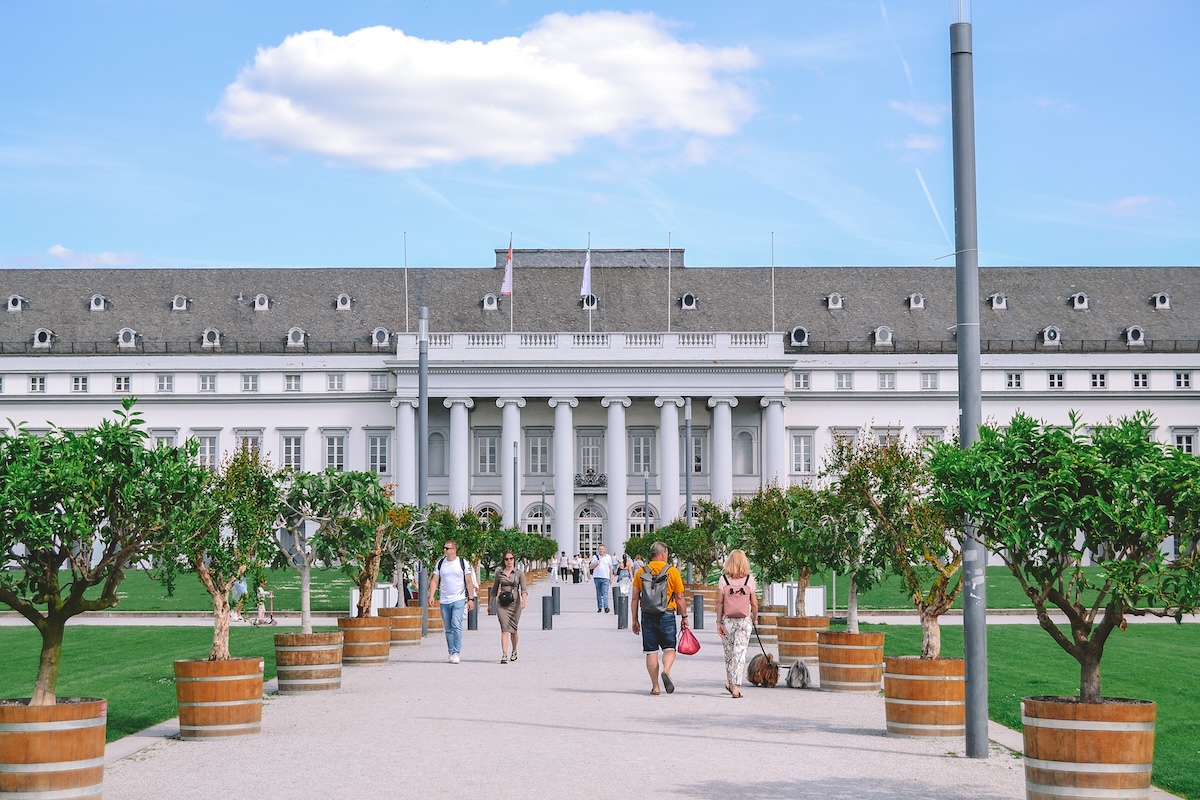
Alas, this is one former royal residence that visitors can’t tour. The Electoral Palace was built just before the French Revolution in the French Classicism style. It was — you guessed it — destroyed in WWII and later rebuilt.
Today the palace serves as a conference space and event venue, but it’s still worth visiting in the warmer months to see the gorgeous terraced garden in the back. You can either walk around the palace to reach the garden, or there’s a passageway that leads you through a corridor in the palace and out the back.
From the garden, you have a great view of the Rhine River and Ehrenbreitstein Fortress, as well as access to the Rhine Promenade. Either continue your exploration of Koblenz from here, or sit down and relax for a bit!
Even More Thing to Do in Koblenz
If you’ll be in Koblenz for more than one day or simply like to know what all of your options are, I’ve heard good things about the following activities:
- 2-Hour Sightseeing Cruise — Departs from Koblenz and shows you the best of the Upper Middle Rhine Valley World Heritage Site.
- Rhein in Flammen (Rhein in Flames) — A convoy of boats sail down the Rhine River and set off a spectacular fireworks display. Rhein in Flames is taking place in Koblenz on August 10, 2024.
Oh, and Look Out for the Little Rascal!
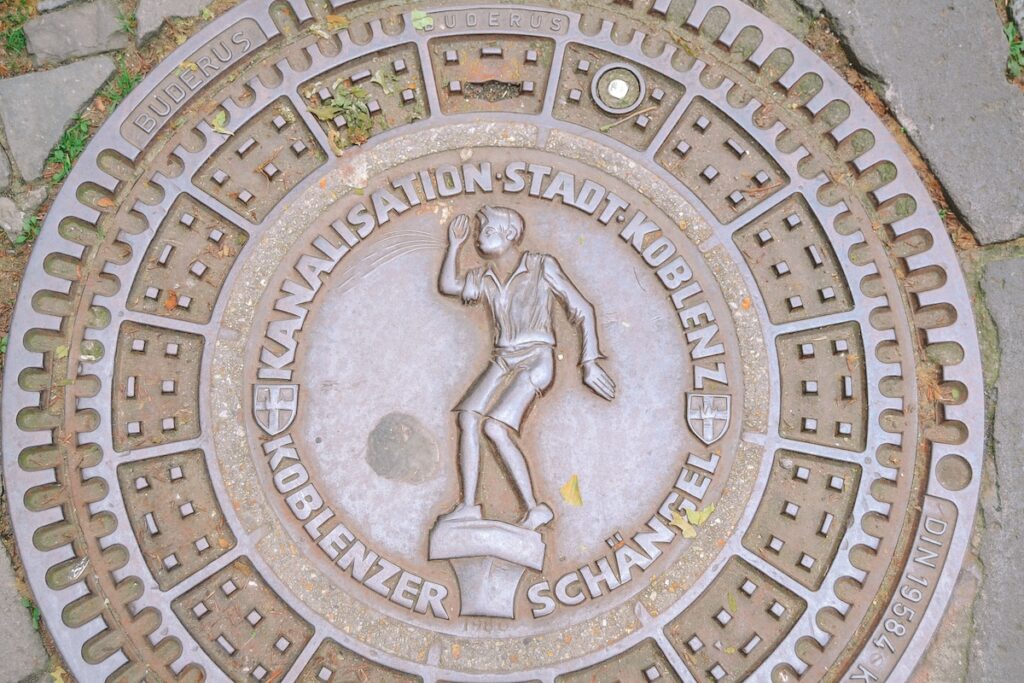
While exploring Koblenz, be sure to glance down at the manhole covers now and again — you’ll notice there’s a little boy spitting out water on them!
That little boy is called the “Koblenzer Schängel” and he’s the symbol of the city. Koblenz fell briefly under French control during the Napoleonic Era; during that time, German-French boys born in Koblenz were commonly named “Jean,” which sounded like “Schang” in the local dialect.
In 1914, Koblenz poet Josef Cornelius wrote the “Schängellied” (meaning “Schängel Song,” with Schängel being a diminutive version of the word “Schang”) and it’s now considered the city’s anthem.
The figure of the Koblenzer Schängel is a little rascal who stands for wit and the local way of life.
Bis nächstes Mal, Koblenz!
Now that you know what there is to do and see in Koblenz, you can start planning your trip. It’s a small city with a prime location along the Rhine River, and I definitely recommend visiting if you’re in the Rheingau region of Germany!
Don’t forget to follow me on Instagram to keep up with my daily adventures in Berlin and beyond!

Comments & Reviews
Hi Claire, came across your blog through Pinterest. Loved your writeup and recommendation.
Hope ur enjoying life in Berlin